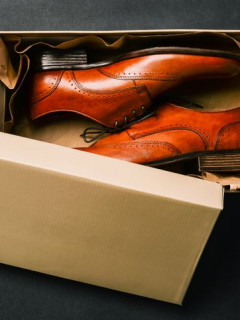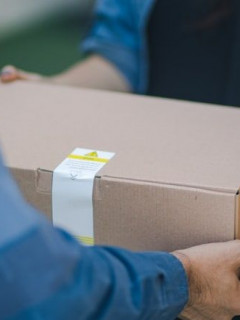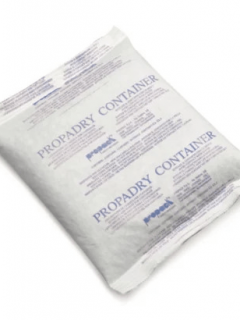Vacuum packing clothes and other textiles saves a lot of space – whether in a suitcase, a parcel or a wardrobe. It is believed that they could reduce their volume by up to 75% (much depends on the fabric). Those unfamiliar with the subject may not know how to vacuum pack clothes. However, statistics show that the vast majority of people who have come into closer contact with the issue praise vacuum packing. How to vacuum pack clothes – step by step?
What is needed to vacuum pack clothes?
Vacuum packing of clothesrequires the use of several items: special vacuum bags, a hoover with just the suction tube (no brush), a special pump or a sealing machine. One or more items can be packed into a single vacuum bag. This packaging is transparent, so it is easy to see what is inside.
Characteristics of vacuum bags for clothes
Vacuum bags can vary in size – they should be sized to fit the clothes, other textiles being stored. However, the choice is very large.
Vacuumbags also differ in the way the air is extracted. The most popular packs have a special valve that attaches to the hoover tube. Other models have a special pump through which suction takes place. However, this requires more effort, so most people opt for the first option.
Clothes bags for vacuum packing are usually made of transparent plastic (e.g. nylon, polyamide, film). This plastic provides durability, reusability and the ability to peek inside without opening. There are also opaque bags with a small ‘window’ through which you can see what is inside. However, these are considered highly impractical.
Multifunctional vacuum bags with a hanger are an interesting option. These have – as the name suggests – integrated handles (hangers) so that they can be hung up – along with the particular garment – conveniently in the wardrobe.
How do you pack clothes in vacuum bags? How do I pack my clothes in a vacuum bag?
First, put the folded clothes into the vacuum bag (through the wide opening on its side). Lay the clothes evenly and flat – as far as possible. Ideally, the entire surface of the bag should be filled.
Close the zipper while squeezing the transparent pack (air must not escape from it). Open the lid of the circular valve and then apply the tip of the hoover to it. The tube should fill the hole tightly – so that no air escapes over the sides. The next step is to switch on the hoover – preferably on minimum power. The vacuum bag will gradually shrink as the air is extracted. If you notice that any area on the transparent pack is falling more slowly, squeeze it here.
Not just clothes – what can be vacuum packed?
Spare bedding and pillows, as well as blankets (synthetic, thick, woollen) are the most common items to be vacuum packed. Vacuum bags are also great for packing small plush toys that your child is not currently playing with, and you don’t want to throw them away or give them away.
When it comes to clothes, vacuum packing is mostly concerned with seasonal clothing, e.g. winter and autumn coats, quilted jackets, summer clothes, hats and gloves. For outerwear, it is worth opting for vacuum bags with hangers that can be hung in the wardrobe.
What is good to know about vacuum sealing?
The principle of vacuum packing is deceptively similar to so-called vacuum sealing, resulting in specialised, water-repellent packaging which provides protection against damp, corrosion and electrostatic effects. Vacuum sealing film (so-called film sleeves) has many desirable properties.
Are you interested in this topic? Read more: Overview of specialised packaging – anti-static, anti-corrosion, foil sleeves.
Filmsleeves from RAJA are extremely robust, resistant to mechanical damage, moisture, solvents and chemicals.
Advantages of vacuum packing
The most important advantage of vacuum packing of clothes is the possibility to save space – this is especially useful in places with small space. In addition, the packed garments are contained in airtight containers, preventing moisture, mould, moths, dust mites and unpleasant odours from reaching them. Vacuum packing bags for clothes make it possible to skilfully manage bedding and seasonal clothes that are rarely used.
Vacuumbags and sacks are of great importance when travelling, moving house – when exceptional attention is paid to the amount of space available. Hermetic sealing of clothes will effectively protect the contents of a suitcase or parcel from unexpected situations (e.g. moisture, mechanical and chemical damage).
Does vacuum packing have any disadvantages?
A significant disadvantage of vacuum packing is the unsightly appearance of clothes that have been in a vacuum bag for a long time. The answer to the question “do clothes in vacuum bags crumple” is yes. They require subsequent refreshing, ironing. Vacuum packing of more frequently used clothes is not recommended. Removing, reinserting and suctioning the garment bags is much more work than putting them back on the shelf.
If the vacuum bag is punctured, it will no longer serve its purpose. Do not allow protruding and sharp parts, clothes clamps or zips to touch the surface of the packaging – they are better off inside the clothes, tucked away.
Vacuum packing clothes before a move – is it the only option? How do you vacuum pack your clothes?
There’s no denying that vacuum bagging your clothes before a general move is an excellent idea. Vacuum bags allow you to significantly reduce the volume of your clothes. The most common items packed in them during a move are: seasonal jackets and coats, furs and leather jackets, overalls, sportswear, bedding, towels and even shoes.
However, not everyone has the opportunity to stock up on a special vacuum packing kit. Many people pack their clothes in death bags. If you choose this option, be sure to get strong polythene bags with a capacity of 120-140 litres. Secure them with extra strong adhesive tape before shipping.
How do I protect clothes for shipping in other ways? Cardboard boxes made of strong 5-layer or 7-layer cardboard are also a popular alternative. These provide ideal protection for garments against mechanical damage. Remember, however, that cardboard boxes are not waterproof – unlike vacuum bags. They need to be additionally protected with stretch film to prevent moisture from entering. Cardboard boxes with clothes should also be properly sealed. Check what can be sent in an envelope and what should be in a cardboard box.
How to arrange the clothes inside to fill as much space as possible? Clothes are usually rolled or cubed. A good folding method will avoid creases, ironing after unpacking.
Cardboard boxes are also easier to verify. They can be seamlessly signed with the name of the person to whom the clothes belong, making the unpacking process easier later.














